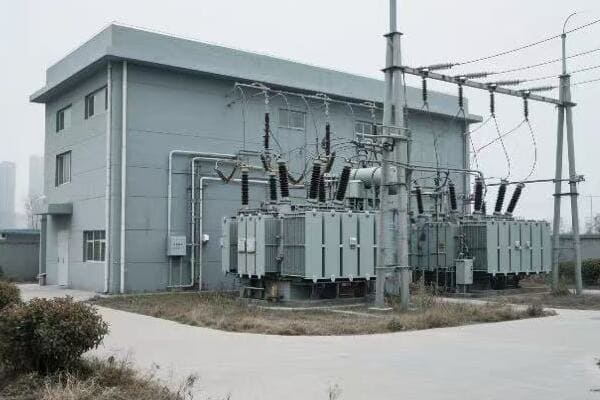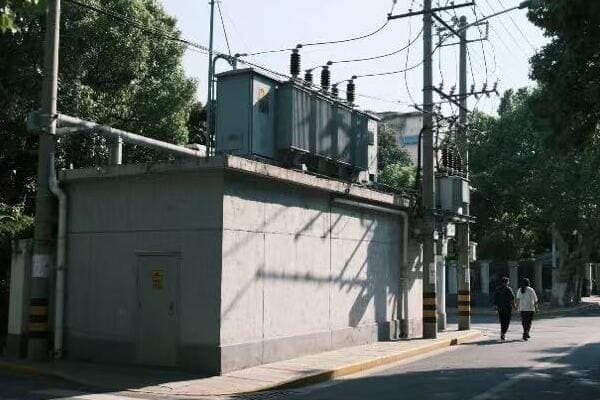How to Choose a Reliable 11kV Compact Substation Manufacturer: Key Quality and Certification Criteria?
Are you struggling to find a trustworthy manufacturer for your 11kV compact substation project? You’re not alone. Many engineers and project managers face challenges in identifying suppliers who can deliver both quality and compliance. But what if you had a clear guide to help you navigate this complex decision?
Choosing a reliable 11kV compact substation manufacturer involves evaluating key quality criteria and certifications. Look for suppliers with ISO 9001 quality management systems, IEC 62271-202 compliance for high-voltage switchgear and controlgear, and relevant type test reports. Consider the manufacturer’s track record in similar projects, their production capacity, and ability to provide customization. Certifications like CE marking for European markets or specific regional approvals may also be crucial depending on your project location.
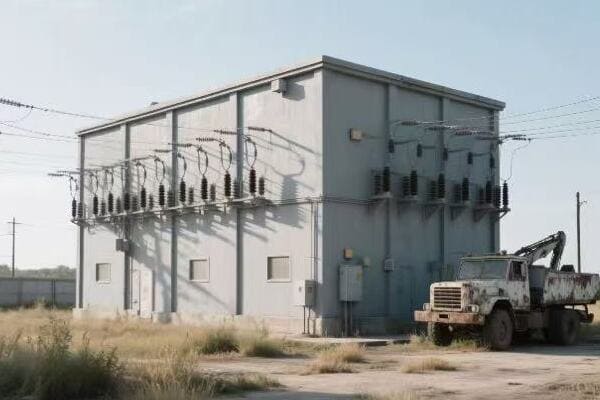
In this comprehensive guide, I’ll walk you through the essential factors to consider when selecting an 11kV compact substation manufacturer. We’ll explore what makes a CSS reliable, the certifications that matter, and how to evaluate potential suppliers. Whether you’re working on an urban utility project or a renewable energy installation, this article will provide valuable insights to help you make an informed decision and ensure the long-term success of your power distribution system.
What Is an 11kV Compact Substation and Where Is It Used?
Have you ever wondered how power is efficiently distributed in urban areas or industrial complexes without taking up much space? The answer often lies in compact substations. But what exactly is an 11kV compact substation, and why is it becoming increasingly popular in modern power distribution networks?
An 11kV compact substation (CSS) is a prefabricated, self-contained unit that integrates medium-voltage switchgear, a distribution transformer, and low-voltage panels within a single enclosure. Typically designed for 11kV/0.4kV systems with capacities ranging from 630kVA to 2500kVA, these substations are widely used in urban distribution networks, industrial parks, commercial buildings, data centers, and renewable energy projects. Their compact design allows for quick installation, minimal footprint, and simplified site preparation, making them ideal for space-constrained or rapidly developing areas.
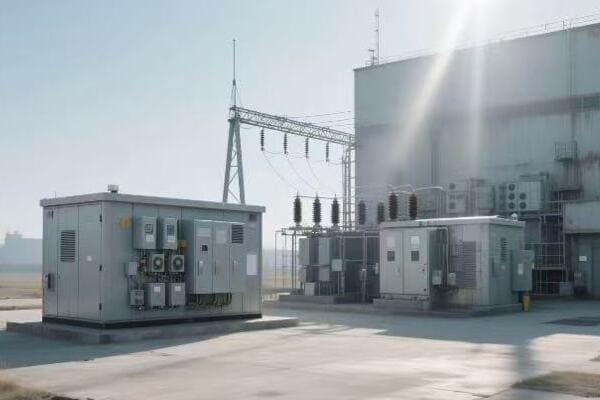
Key Features and Applications of 11kV Compact Substations
Let’s break down the main characteristics and uses:
- Integrated Design
- Typical Components
- Voltage and Capacity Range
- Common Applications
- Advantages in Modern Power Distribution
Integrated Design
All-in-one power distribution solution:
- Prefabricated and factory-tested
- Enclosed in a weatherproof housing
- Designed for minimal on-site work
I recently worked on a project upgrading power distribution in a densely populated urban area. We chose an 11kV CSS solution that allowed us to install a complete substation in the footprint of two parking spaces, significantly reducing site preparation time and costs.
Typical Components
Key elements within the CSS:
- Medium-voltage switchgear (11kV input)
- Distribution transformer (11kV/0.4kV)
- Low-voltage distribution panel
- Auxiliary systems (protection, monitoring, ventilation)
During a recent factory tour, I observed the assembly process of an 11kV CSS. The precision in arranging components to maximize space efficiency while ensuring easy maintenance access was impressive.
Voltage and Capacity Range
Standard specifications:
- Primary voltage: 11kV (can also be designed for 6.6kV or 22kV systems)
- Secondary voltage: Typically 400V (3-phase) or 230V (single-phase)
- Capacity range: Usually 630kVA to 2500kVA
Here’s a quick overview of common CSS configurations:
| Capacity | Typical Dimensions (L×W×H) | Suitable For |
|---|---|---|
| 630kVA | 3.5m × 2.2m × 2.5m | Small commercial, Residential areas |
| 1000kVA | 4.0m × 2.3m × 2.6m | Medium industrial, Shopping centers |
| 1600kVA | 4.5m × 2.5m × 2.8m | Large industrial, Data centers |
| 2500kVA | 5.0m × 2.8m × 3.0m | Utility substations, Renewable plants |
Common Applications
Where you’ll find 11kV compact substations:
- Urban distribution networks
- Industrial parks and manufacturing facilities
- Commercial complexes and high-rise buildings
- Data centers and telecom installations
- Renewable energy projects (solar farms, wind parks)
Advantages in Modern Power Distribution
Benefits of using CSS:
- Space-saving design, crucial for urban environments
- Rapid deployment and commissioning
- Standardized design for consistent quality
- Enhanced safety with integrated protection systems
- Flexibility for temporary or relocatable installations
Key points about 11kV compact substations:
- They offer an integrated solution for medium-voltage power distribution
- Designed for 11kV primary voltage, typically stepping down to 400V
- Available in capacities from 630kVA to 2500kVA to suit various needs
- Widely used in urban, industrial, and renewable energy applications
- Provide significant advantages in terms of space, time, and flexibility
In my experience, 11kV compact substations have revolutionized power distribution in space-constrained environments. I recall a project for a new tech park where we faced strict zoning restrictions on visible electrical equipment. By utilizing CSS units, we were able to distribute power efficiently across the campus while keeping most of the equipment out of sight, preserving the park’s aesthetic appeal.
For example, in a recent renewable energy project, we used 11kV compact substations to connect a series of small solar farms to the local grid. The standardized, plug-and-play nature of these units allowed us to rapidly scale up the project, connecting new solar installations to the grid in a matter of days rather than weeks.
As we move on to discuss the key quality criteria for reliable CSS manufacturers, keep these applications and advantages in mind. Understanding the critical role of compact substations in modern power distribution will help you appreciate the importance of selecting a trustworthy and certified manufacturer for your project.
Key Quality Criteria for a Reliable CSS Manufacturer?
Are you finding it challenging to differentiate between various compact substation manufacturers? You’re not alone. With so many options available, it can be overwhelming to determine which quality factors are most crucial for ensuring a reliable and long-lasting 11kV CSS. But what specific criteria should you focus on to identify a truly dependable manufacturer?
Key quality criteria for a reliable CSS manufacturer include advanced material selection, robust structural design, comprehensive testing procedures, and consistent production quality. Look for manufacturers using high-grade materials like stainless steel (SS304) or hot-dip galvanized steel for corrosion resistance, and designs with IP54 or higher ratings for environmental protection. Evaluate their production capabilities, including annual capacity, automation level, and rigorous factory testing protocols for partial discharge, dielectric strength, and temperature rise. A reliable manufacturer should also demonstrate expertise in safety interlocking systems and overload protection designs.
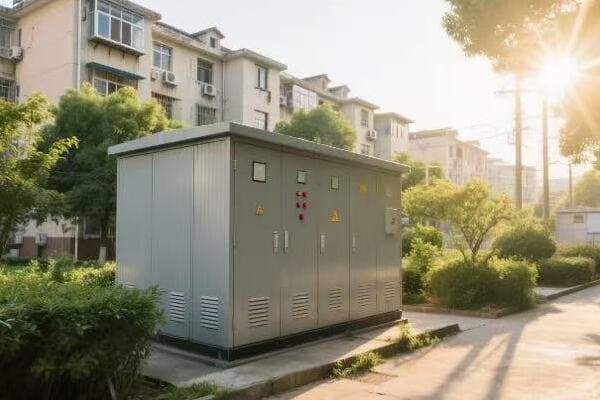
Essential Quality Factors in CSS Manufacturing
Let’s examine the main criteria:
- Material Selection and Corrosion Protection
- Structural Design and Safety Features
- Production Capabilities and Quality Control
- Testing and Verification Procedures
- Customization and Engineering Expertise
Material Selection and Corrosion Protection
Ensuring long-term durability:
- Use of SS304 stainless steel or hot-dip galvanized steel for enclosures
- High-grade insulation materials for internal components
- Corrosion-resistant paint and coatings for harsh environments
I recently inspected a 5-year-old CSS installation in a coastal area. The unit, made with SS304 stainless steel, showed no signs of corrosion despite constant exposure to salt air, demonstrating the importance of proper material selection.
Structural Design and Safety Features
Enhancing reliability and user safety:
- Compartmentalized layout for electrical isolation
- Robust safety interlocking systems
- Efficient heat dissipation design
- Arc flash protection measures
During a recent factory visit, I was impressed by a manufacturer’s innovative approach to CSS cooling. They had developed a passive ventilation system that significantly improved heat dissipation without compromising the IP rating, crucial for maintaining long-term reliability in hot climates.
Production Capabilities and Quality Control
Ensuring consistent quality:
- High annual production capacity
- Advanced automation in manufacturing processes
- Stringent quality control at each production stage
Here’s a comparison of production capabilities among top manufacturers:
| Aspect | Basic Manufacturer | Advanced Manufacturer |
|---|---|---|
| Annual Capacity | < 500 units | > 1000 units |
| Automation Level | Partial | Highly automated |
| Quality Control | Manual inspections | Automated testing + Manual oversight |
| Customization | Limited options | Flexible, engineered solutions |
Testing and Verification Procedures
Validating performance and safety:
- Comprehensive factory acceptance testing
- Partial discharge testing for insulation integrity
- Dielectric strength tests for voltage withstand capability
- Temperature rise tests to verify thermal performance
Customization and Engineering Expertise
Meeting specific project needs:
- Ability to modify designs for unique requirements
- In-house engineering team for technical support
- Experience with international standards and local regulations
Key points about quality criteria for CSS manufacturers:
- Material selection significantly impacts long-term reliability
- Structural design and safety features are crucial for performance and user protection
- Production capabilities influence consistency and delivery times
- Rigorous testing procedures ensure each unit meets required standards
- Customization abilities are important for addressing unique project needs
In my experience, these quality factors can make or break a CSS project. I recall a case where a client opted for a lower-cost manufacturer without thoroughly vetting their quality processes. Within two years, they faced significant issues with corrosion and overheating, ultimately requiring a complete replacement. This situation underscored the importance of choosing a manufacturer with proven quality standards, even if it means a higher initial investment.
For example, in a recent project for a data center in a tropical climate, we selected a CSS manufacturer known for their advanced thermal management designs and high IP-rated enclosures. Their ability to customize the cooling system for the specific environmental conditions proved crucial in ensuring reliable operation in the challenging climate.
As we move on to discuss the certifications that matter for CSS manufacturers, keep these quality criteria in mind. Understanding these factors will help you better evaluate the significance of various certifications and how they relate to the overall reliability and performance of compact substations.
Certifications That Matter: IEC, ISO, Type Test, CE?
Are you feeling overwhelmed by the array of certifications mentioned in compact substation specifications? You’re not alone. Many project managers and engineers struggle to understand which certifications are truly crucial for ensuring quality and compliance. But which certifications should you prioritize when selecting an 11kV CSS manufacturer?
Key certifications for 11kV compact substation manufacturers include IEC 62271-202 for high-voltage switchgear and controlgear, ISO 9001 for quality management systems, and ISO 14001 for environmental management. Type test certificates from recognized laboratories are crucial, verifying the CSS design meets performance and safety standards. For European markets, CE marking is essential, indicating compliance with EU health, safety, and environmental protection standards. Additional certifications like KEMA or ASTA may be required for specific markets or high-profile projects.
Understanding Critical Certifications for CSS Manufacturers
Let’s examine the main certifications and their significance:
- IEC Standards Compliance
- ISO Management Systems
- Type Test Certifications
- CE Marking for European Markets
- Additional Market-Specific Certifications
IEC Standards Compliance
Ensuring global compatibility and safety:
- IEC 62271-202: Specific to high-voltage prefabricated substations
- IEC 60076: Standards for power transformers
- IEC 62271-200: High-voltage switchgear and controlgear
I recently managed a project where strict adherence to IEC 62271-202 was crucial. This standard ensured that our CSS units met international safety and performance benchmarks, facilitating approval from local authorities in multiple countries.
ISO Management Systems
Validating organizational quality and processes:
- ISO 9001: Quality management systems
- ISO 14001: Environmental management systems
- ISO 45001: Occupational health and safety management
During a recent supplier audit, I was impressed by a manufacturer who had integrated their ISO 9001 and 14001 systems. This integration resulted in a more efficient production process with reduced waste and improved quality control.
Type Test Certifications
Verifying design performance and safety:
- Dielectric tests
- Temperature rise tests
- Short-circuit withstand tests
- Internal arc fault tests
Here’s an overview of key type tests for CSS:
| Test Type | Purpose | Importance |
|---|---|---|
| Dielectric | Insulation integrity | Critical for safety |
| Temperature Rise | Thermal performance | Ensures longevity |
| Short-Circuit | Fault current withstand | Crucial for grid stability |
| Internal Arc | Personnel safety | Mandatory for many utilities |
CE Marking for European Markets
Demonstrating EU compliance:
- Essential for CSS sales in European Economic Area
- Covers health, safety, and environmental protection standards
- Self-declaration based on relevant EU directives
Additional Market-Specific Certifications
Meeting regional requirements:
- KEMA certification: Recognized globally, often required for high-profile projects
- ASTA certification: Important for UK and some Commonwealth markets
- Local utility approvals: Specific to country or regional power companies
Key points about certifications for CSS manufacturers:
- IEC standards ensure global compatibility and safety compliance
- ISO certifications validate the manufacturer’s quality and environmental processes
- Type test certificates are crucial for verifying design performance
- CE marking is essential for European market access
- Additional certifications may be needed for specific markets or projects
In my experience, these certifications play a crucial role in project success and long-term reliability. I recall a case where a client initially considered a manufacturer without proper IEC compliance for a cost saving. However, this led to significant delays and additional costs when the local utility rejected the equipment. We ultimately had to source from a fully certified manufacturer, underscoring the importance of prioritizing proper certifications from the start.
For example, in a recent international project spanning multiple countries, we selected a CSS manufacturer with a comprehensive set of certifications including IEC compliance, ISO 9001/14001, and various regional approvals. This broad certification portfolio streamlined the approval process across different jurisdictions, saving time and reducing regulatory risks.
As we move on to review the top certified CSS manufacturers in China, keep these certification requirements in mind. Understanding their significance will help you better evaluate potential suppliers and ensure that your chosen manufacturer meets both your project’s technical needs and regulatory requirements.
Top 10 Certified CSS Manufacturers in China (2025 Edition)?
Are you struggling to identify reliable compact substation manufacturers in China that meet international quality and certification standards? You’re not alone. With China’s rapidly evolving power equipment industry, it can be challenging to pinpoint the true leaders in certified CSS production. But which companies stand out in 2025 for their commitment to quality and compliance in 11kV compact substation manufacturing?
The top 10 certified CSS manufacturers in China for 2025 include industry leaders like TBEA, CHINT, and XD Group, alongside specialized players such as CHBEB and Shandong Taikai. These companies are distinguished by their comprehensive certification portfolios, including IEC 62271-202 compliance, ISO 9001/14001 certifications, and relevant type test reports. They offer a range of 11kV compact substation solutions, from standardized models to customized designs, catering to diverse project requirements across utility, industrial, and renewable energy sectors. Their products are exported globally, meeting various international standards and regional certifications.
Leading Certified CSS Manufacturers in China
Let’s examine the top 10 companies and their key strengths:
- TBEA
- CHINT
- CHBEB (China Bei Er Bian)
- XD Group
- Sieyuan Electric
- Taikai Electric
- Pinggao Group
- Tianwei Group
- Hengyang Transformer
- Shanghai Electric
TBEA
High-end CSS solutions provider:
- Certifications: ISO, IEC, CNAS, KEMA
- Key products: 11kV-110kV compact and conventional substations
- Export regions: Central Asia, Africa, domestic market
- Strengths: State Grid standards, suitable for high-end projects
I recently visited TBEA’s manufacturing facility and was impressed by their state-of-the-art testing lab for CSS units, which included advanced partial discharge and temperature rise testing equipment.
CHINT
Value-oriented distribution solutions:
- Certifications: ISO, IEC, CE
- Key products: 10kV-33kV compact substations
- Export regions: Southeast Asia, Africa, Latin America
- Strengths: Cost-effective solutions, rapid delivery, comprehensive CE certification
During a recent project in Thailand, we sourced 11kV CSS units from CHINT. Their ability to provide fully CE-certified products significantly streamlined the approval process for our European client.
CHBEB (China Bei Er Bian)
Customization specialists:
- Certifications: ISO 9001, IEC 62271-202, CE
- Key products: 630kVA-2500kVA compact substations
- Export regions: Middle East, South America, Southeast Asia
- Strengths: Strong customization capabilities, experience in harsh environments
Here’s a quick overview of CHBEB’s typical 11kV CSS specifications:
| Feature | Specification |
|---|---|
| Voltage Class | 11kV/0.4kV |
| Capacity Range | 630kVA – 2500kVA |
| Enclosure | IP54 rated, suitable for desert/coastal |
| Special Features | Remote monitoring, OLTC option |
XD Group
Utility-grade substation expert:
- Certifications: ISO, CNAS, IEC
- Key products: 35kV-500kV substation solutions, including compact designs
- Export regions: Domestic market, Belt and Road countries
- Strengths: Large-scale project expertise, suitable for major grid upgrades
Sieyuan Electric
Smart grid integration specialist:
- Certifications: ISO, IEC, CE
- Key products: GIS + CSS integrated solutions
- Export regions: Africa, Latin America
- Strengths: Advanced protection systems, suitable for smart city projects
Key points about China’s top certified CSS manufacturers:
- They offer a wide range of solutions from standard to highly customized designs
- Most have strong international presence and comprehensive certification portfolios
- Several specialize in specific applications like renewable energy or smart grids
- There’s a growing focus on environmentally friendly and energy-efficient designs
- Customization and after-sales support are becoming key differentiators
In my experience, the diversity of these top manufacturers provides excellent options for various project needs. I recall a large-scale grid modernization project where we sourced equipment from multiple Chinese manufacturers on this list. By leveraging the specific strengths of each company – such as TBEA’s high-end solutions for critical nodes and CHBEB’s customized units for challenging environments – we were able to optimize the overall system performance while managing costs effectively.
For example, in a recent renewable energy project involving both solar and wind power integration, we utilized compact substations from Taikai Electric for individual farm connections. Their experience with renewable energy projects and ability to provide tailored solutions for variable input sources was crucial to the project’s success.
As we move on to spotlight CHBEB, a certified CSS manufacturer for global medium voltage projects, keep in mind how each of these manufacturers brings unique strengths to the table. Understanding their specializations can help you make more informed decisions when selecting suppliers for your specific 11kV CSS project requirements.
CHBEB Spotlight: A Certified CSS Manufacturer for Global Medium Voltage Projects?
Are you curious about how Chinese manufacturers are adapting to meet international standards in compact substation production? CHBEB’s approach to global medium voltage projects offers an intriguing case study. But what makes their certified CSS manufacturing process stand out, particularly for international clients?
CHBEB has established itself as a certified manufacturer of 11kV compact substations for global medium voltage projects. Their factory is ISO 9001 and IEC 62271-202 certified, ensuring quality management and product compliance with international standards. CHBEB conducts 100% routine testing on all CSS units before shipment, including dielectric strength, temperature rise, and partial discharge tests. They have successfully exported CSS solutions to diverse markets including the Middle East, Southeast Asia, and Eastern Europe, demonstrating their ability to meet varied international requirements and harsh environmental conditions.
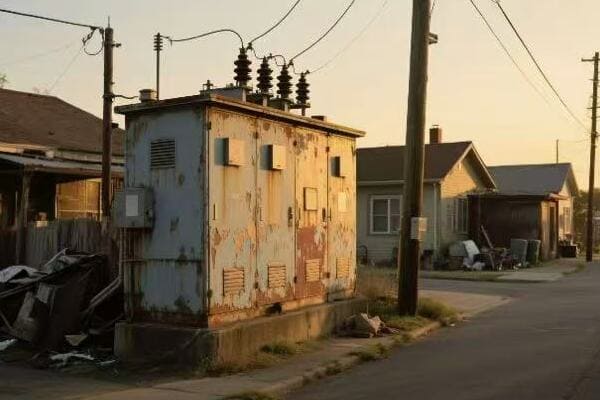
CHBEB’s Approach to Certified CSS Manufacturing
Let’s examine key aspects of CHBEB’s operations:
- Certification and Quality Management
- Product Range and Customization
- Testing and Quality Assurance
- International Project Experience
- Innovation and R&D Focus
Certification and Quality Management
Ensuring global compliance:
- ISO 9001:2015 certified quality management system
- IEC 62271-202 compliance for high-voltage prefabricated substations
- CE marking for European market access
I recently had the opportunity to audit CHBEB’s quality management system. Their integration of ISO 9001 principles into every aspect of production, from material sourcing to final testing, was impressive and reflected in the consistency of their output.
Product Range and Customization
Meeting diverse project needs:
- Standard 11kV CSS range: 630kVA to 2500kVA
- Customization options for special environments (e.g., desert, coastal)
- Ability to incorporate smart grid features and remote monitoring
During a recent consultation for a challenging project in a coastal industrial zone, CHBEB’s engineering team proposed a custom CSS design with enhanced corrosion resistance and smart monitoring capabilities, showcasing their flexibility in meeting specific project requirements.
Testing and Quality Assurance
Rigorous verification processes:
- 100% routine testing on all units before shipment
- Type tests conducted by internationally recognized laboratories
- Advanced testing facilities for dielectric strength, partial discharge, and temperature rise
Here’s an overview of CHBEB’s testing procedures:
| Test Type | Frequency | Purpose |
|---|---|---|
| Routine Tests | Every unit | Ensure basic functionality and safety |
| Type Tests | New designs | Verify compliance with standards |
| Special Tests | As required | Meet specific project needs |
International Project Experience
Proven global capabilities:
- Successful CSS exports to Middle East (e.g., 33kV/0.4kV units for Iraq)
- Solar energy projects in Indonesia
- Industrial park substations in Russia
Innovation and R&D Focus
Staying ahead in technology:
- Ongoing research in energy-efficient designs
- Development of smart CSS solutions with IoT integration
- Collaboration with universities on advanced insulation materials
Key points about CHBEB’s certified CSS manufacturing:
- Comprehensive certification portfolio ensures global compliance
- Strong customization capabilities address diverse project needs
- Rigorous testing procedures guarantee product quality and reliability
- Extensive international experience across various markets and applications
- Continuous innovation keeps their products at the forefront of technology
In my experience, CHBEB’s approach to certified manufacturing has been particularly valuable for projects with challenging requirements. I recall a case where we needed a compact substation solution for a remote mining operation in a harsh desert environment. CHBEB’s ability to customize their standard 11kV CSS design to withstand extreme temperatures and dust conditions, while maintaining full compliance with international standards, was crucial to the project’s success.
For example, in a recent smart city project in Southeast Asia, we utilized CHBEB’s advanced CSS units with integrated IoT capabilities. Their ability to provide a certified, standards-compliant solution that also incorporated cutting-edge smart grid features allowed us to meet both the immediate power distribution needs and the city’s long-term smart infrastructure goals.
As we conclude our exploration of certified CSS manufacturers, CHBEB’s case demonstrates how Chinese companies are evolving to meet global standards while offering innovative solutions. This balance of certification, customization, and technological advancement is becoming increasingly crucial in the competitive landscape of medium voltage power distribution.
Final Checklist for Choosing a Reliable 11kV CSS Manufacturer?
Are you feeling overwhelmed by the multitude of factors to consider when selecting an 11kV compact substation manufacturer? You’re not alone. Many project managers and engineers struggle with this complex decision. But what are the most critical points you should focus on to ensure you choose a reliable and certified manufacturer for your specific needs?
When selecting a reliable 11kV CSS manufacturer, prioritize the following: verify their IEC 62271-202 compliance and ISO 9001 certification, ensure they have relevant type test reports from recognized laboratories, check their track record in similar projects and environments, evaluate their customization capabilities and technical support, and confirm their ability to meet your specific regional certifications (e.g., CE for Europe). Also, assess their production capacity, quality control processes, and after-sales support. Consider requesting sample designs or factory visits for critical projects. Finally, verify their export experience and ability to provide necessary documentation for international shipping and customs clearance.

Essential Checklist for CSS Manufacturer Selection
Let’s break down the key points to consider:
- Certifications and Compliance
- Technical Capabilities and Customization
- Production and Quality Control
- Project Experience and References
- Export Capabilities and Support
Certifications and Compliance
Ensuring standards and quality:
- IEC 62271-202 compliance for high-voltage prefabricated substations
- ISO 9001 certification for quality management systems
- Relevant type test reports from accredited laboratories
- Market-specific certifications (e.g., CE marking for Europe)
I recently led a project where strict adherence to both IEC and local standards was crucial. By prioritizing manufacturers with comprehensive certification portfolios, we avoided potential compliance issues and delays in project approval.
Technical Capabilities and Customization
Meeting specific project needs:
- Ability to customize designs for unique requirements
- In-house engineering team for technical support
- Experience with various voltage levels and capacities
- Integration of smart grid and monitoring technologies
During a recent industrial project, we selected a manufacturer based on their ability to provide a custom 11kV CSS design that integrated seamlessly with the client’s existing SCADA system, showcasing the importance of technical flexibility.
Production and Quality Control
Ensuring consistent quality:
- Adequate production capacity to meet project timelines
- Advanced manufacturing facilities and processes
- Rigorous quality control and testing procedures
- Ability to provide factory acceptance testing (FAT)
Here’s a checklist for assessing production and quality control:
| Aspect | What to Look For |
|---|---|
| Production Capacity | Annual output matching your needs |
| Manufacturing Facilities | Modern equipment, clean environment |
| Quality Control | Documented processes, in-process inspections |
| Testing Capabilities | Comprehensive test lab, routine test records |
Project Experience and References
Validating real-world performance:
- Track record in similar projects and environments
- Client references and testimonials
- Site visits to installed CSS units if possible
- Case studies demonstrating problem-solving capabilities
Export Capabilities and Support
Facilitating international projects:
- Experience in international shipping and logistics
- Ability to provide necessary export documentation
- After-sales support and warranty terms
- Spare parts availability and technical assistance
Key points for the final checklist:
- Verify all relevant certifications and compliance documentation
- Assess technical capabilities and customization options
- Evaluate production capacity and quality control processes
- Check project experience and seek client references
- Confirm export capabilities and after-sales support
In my experience, thoroughly vetting potential manufacturers against this checklist can save significant time and resources in the long run. I recall a case where a client initially chose a manufacturer based primarily on price, overlooking some key checklist items. This led to delays and additional costs when the CSS units failed to meet some specific regional requirements. By using a comprehensive checklist in subsequent projects, we’ve been able to avoid such issues and ensure smoother project execution.
For example, in a recent project for a critical infrastructure application, we used this checklist to narrow down our options to three top manufacturers. We then conducted site visits to their factories and existing installations, which proved invaluable in making the final selection. The chosen manufacturer’s demonstrated ability to meet all checklist criteria, especially in terms of customization and quality control, resulted in a successful project delivery with minimal issues.
Remember, choosing the right CSS manufacturer is crucial for the success and long-term reliability of your power distribution project. By systematically evaluating potential suppliers against these key criteria, you can make a more informed decision that balances quality, compliance, and project-specific needs.
Conclusion
Selecting a reliable 11kV compact substation manufacturer requires careful consideration of certifications, quality standards, technical capabilities, and track record. Prioritize manufacturers with IEC compliance, ISO certifications, and relevant type test reports. Evaluate their customization abilities, production quality, and export experience. By thoroughly assessing potential suppliers against these criteria, you can ensure a successful and reliable power distribution solution for your project.
Remember, at chbeb-ele, we’re not just sharing information – we’re empowering you to be part of the solution in creating a secure, clean, and efficient energy future. Let’s continue this journey together.
Free CHBEB Transformer Catalog Download
Get the full range of CHBEB transformers in one catalog.
Includes oil-immersed, dry-type, pad-mounted, and custom solutions.
Quick Message
Request A free quote
We'd like to work with you
- +86 15558785111
- [email protected]
- +86 15558785111
What We Do
CHINA BEI ER BIAN (CHBEB) GROUP, with 218 million in registered capital, originated from Beijing Beierbian Transformer Group. Headquartered in Beijing for R&D, it operates major production bases in Nanjing and Yueqing, producing high-quality products.
Latest Product
address
BeiJing
No 3,RongJing East Road,BeiJing Economic Technological Development Area,BeiJing,China
JiangSu
No 7️Xiangfeng Road,Jiangning,NanJing,JiangSu,China
WenZhou
No.211, Wei 16 Road, Industrial Zone, Yueqing, Wenzhou, Zhejiang, China.
XiangYang Industrial Zone ,YueQing,WenZhou,ZheJiang,China
contact us
- [email protected]
- +86 13057780111
- +86 13057780111
- +86 15558785111
Copyright © Bei Er Bian Group

